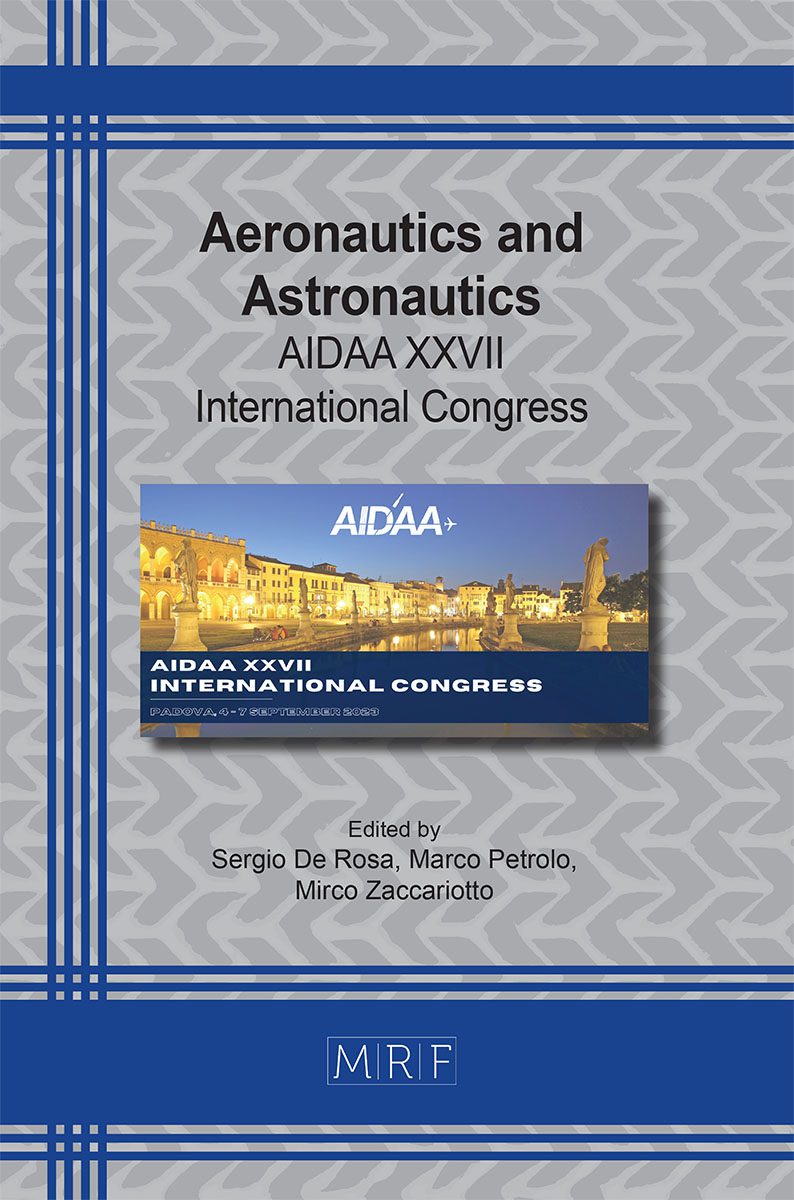Fast reconfiguration maneuvers of a micro-satellite constellation based on a hybrid rocket engine
Antonio Sannino, Stefano Mungiguerra, Sergio Cassese, Raffaele Savino, Alberto Fedele, Silvia Natalucci
download PDFAbstract. In this work, the formation flight of the CubeSat cluster RODiO (Radar for Earth Observation by synthetic aperture DIstributed on a cluster of cubesats equipped with high-technology micro-propellers for new Operative services [1]) with respect to a small satellite in LEO (Low Earth Orbit) has been analyzed. RODiO is an innovative mission concept funded by the Italian Space Agency (ASI) in the context of the Alcor program [2]. The small satellite is equipped with an antenna that allows it to function as a transmitter, whereas RODiO functions as a receiver. The extension of the virtual SAR (Synthetic Aperture Radar) antenna can be achieved by establishing an along-track baseline performing an orbital coplanar maneuver (a phasing maneuver). Another interesting scenario is the possibility to create a cross-track baseline performing an inclination change maneuver, useful for stereoradargrammetric applications. Such formation reconfiguration maneuvers can be achieved in relatively short times only by use of a high-thrust propulsion system, i.e. based on conventional chemical technologies. From the study of maneuvers, it is possible to identify the required ∆V, which represents an input parameter for the design of propulsion system. Among the different kinds of propulsion systems, a Hybrid Rocket Engine was chosen for its safety, compactness and re-ignition and throttle capabilities.
Keywords
Hybrid Rocket Engine, Hydrogen Peroxide, Cubesat Formation Flying, Orbital Maneuvers
Published online 11/1/2023, 4 pages
Copyright © 2023 by the author(s)
Published under license by Materials Research Forum LLC., Millersville PA, USA
Citation: Antonio Sannino, Stefano Mungiguerra, Sergio Cassese, Raffaele Savino, Alberto Fedele, Silvia Natalucci, Fast reconfiguration maneuvers of a micro-satellite constellation based on a hybrid rocket engine, Materials Research Proceedings, Vol. 37, pp 660-663, 2023
DOI: https://doi.org/10.21741/9781644902813-142
The article was published as article 142 of the book Aeronautics and Astronautics
![]() Content from this work may be used under the terms of the Creative Commons Attribution 3.0 license. Any further distribution of this work must maintain attribution to the author(s) and the title of the work, journal citation and DOI.
Content from this work may be used under the terms of the Creative Commons Attribution 3.0 license. Any further distribution of this work must maintain attribution to the author(s) and the title of the work, journal citation and DOI.
References
[1] A. Renga, et al., Design considerations and performance analysis for RODiO distributed SAR mission, Acta Astronautica, Volume 210, September 2023, Pages 474-482. https://doi.org/10.1016/j.actaastro.2023.04.001
[2] G. Leccese, et al., Overview and Roadmap of Italian Space Agency Activities in the Micro- and Nano-Satellite Domain, 73rd IAC, Paris, France, 2022, 18 – 22 September.
[3] M. D’Errico (ed.), Distributed Space Missions for Earth System Monitoring, Space Technology Library, Springer Science Business Media, New York 2013, pp. 125-162. https://doi.org/10.1007/978-1-4614-4541-8_3
[4] D.A. Vallado, Fundamentals of Astrodynamics and Applications, Space Technology Library, Springer Dordrecht, edition 2, pp. 317-422.
[5] S. Mungiguerra, et al., Characterization of novel ceramic composites for rocket nozzles in high-temperature harsh environments, International Journal of Heat and Mass Transfer, 163 (2020) 120492. https://doi.org/10.1016/j.ijheatmasstransfer.2020.120492












